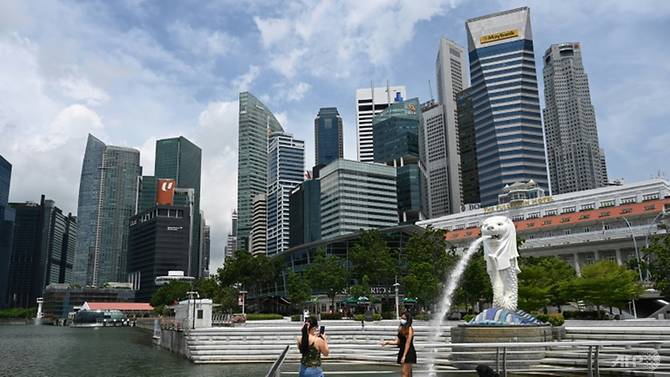News
News

Singapore’s post-COVID-19 recovery plan and Commonwealth via the Commonwealth Union
The recommendations of the Task Force for Singapore’s post-covid-19 recovery could fit to be a blueprint for the recovery of economies in the Commonwealth, albeit some of the recommendations are Singapore-specific.
Noteworthy is the fact that the recommendations, among other things, stressed on the importance of strengthening economic links with the nations of the region and need for Singapore to attract foreign talents and that Singapore may make substantial investments in diverse areas including high-tech agriculture.
“Singapore must create new frontiers in the digital realm and seize opportunities in a growing green economy”, said a government task force on how Singapore can chart its economic recovery in a post-pandemic world.
The Emerging Stronger Taskforce also has recommended that a new public-private partnership that it piloted be institutionalised and for Singapore to strengthen its links with the region.
These recommendations were included in a 118-page report issued on Monday (May 17) by the task force after a year of deliberations.
The Emerging Stronger Taskforce that last year set up, said its vision for the Singapore economy is one that “offers limitless possibilities and opportunities for our nation, our businesses and our people”.
“This will be a new way for Singapore to strengthen our economic linkages with the world, and spur our transformation into a Global-Asia node of technology, innovation, and enterprise,” it said the Ministry of Trade and Industry.
The task force
The task force is chaired by Minister for National Development Desmond Lee and PSA International Group chief executive Tan Chong Meng, and also includes 21 other members from the private and public sectors.
The task force has identified six major shifts arising from the pandemic; a changing global order, accelerating industry consolidation, a rebalance between efficiency and resilience in supply chains and production, accelerating digital transformation and innovation, changes in consumer preferences and an increased focus on environmental and social sustainability.
Then it narrowed down them to areas that it thinks Singapore could invest in before forming nine industry-led alliances to quickly test-bed ideas. These Singapore Together Alliances for Action (AfAs), epitomised a “new model of private-public partnership” aimed at delivering “minimum viable products” using an agile start-up approach.
Over the past year, the task force consulted nearly 2,000 individuals from more than 900 businesses, trade associations and chambers, unions and institutes of higher learning.
Speaking at a press conference at the launch of the task force’s report, Mr Lee said battling uncertainties arising from the pandemic could shorten one’s field of vision but this presents risks, especially for small countries like Singapore.
“We don’t want to look up when the crisis begins to abate … and realise that the world has changed around us and we had this very short-term view. So this guided the work of the (task force) and our central question was what must we do to ensure that Singapore emerges from this crisis stronger.” the minister said.
Five recommendations
The task force said its economic vision is for a “virtually unlimited Singapore” but this will only be possible if the country can “find ways to be of value” to others.
“We cannot compete on technology alone, but by creating and providing services in areas which play to our strengths of trust, speed, consistency, and systems-level coordination,” it wrote.
“This will be a new way for Singapore to strengthen our economic linkages with the world, and serve as a vital node at the intersection of high-value global trade, finance, digital, data, technology, and talent flows.”
Singapore must also resist anti-globalisation and protectionism forces by remaining open, predominantly to global talent and skills, the task force’s report said.
This enables Singaporeans to learn continuously from the best in the world, although companies can access the best ideas and understand consumers and businesses beyond Singapore.
Meanwhile, Malaysian Prime Minister Tan Sri Muhyiddin Yassin introduced the short-term Economic Recovery Plan (Penjana) with forty initiatives worth RM35 billion to stimulate the economy.
Out of the allocated funds, RM10 billion will be direct fiscal injections by the government into the economy. The package including diverse incentives including job retention schemes and much-needed skill development programs for which the government is to allocate RM2 billion to skills improvement of youths and the unemployed, benefiting over 200,000 people.
The package among other features, provides financial protection to vulnerable segments of the economy, while, at the same time, providing substantial incentive such as a National Stimulation Fund of RM1.2 billion; RM600 million is from the government, with the other RM600 million from domestic investors, to be channelled into business digitalisation efforts. RM100 million will be used to establish the National Technology & Innovation Sandbox.
In addition tax amnesties include very attractive offers such as a 0% tax rate across 10 years for new investments of RM300 million to RM500 million in fixed assets for manufacturers, expanded to 15 years for investments above RM500 million.
Malaysian government will set up a RM350 million agro-food fund to ensure continuity for farming and commodities entrepreneurs. A prominent characteristics of recovery plans across the region is to encourage local manufacturing and also promotes Agriculture and allied agro-industries.


 All Articles
All Articles
